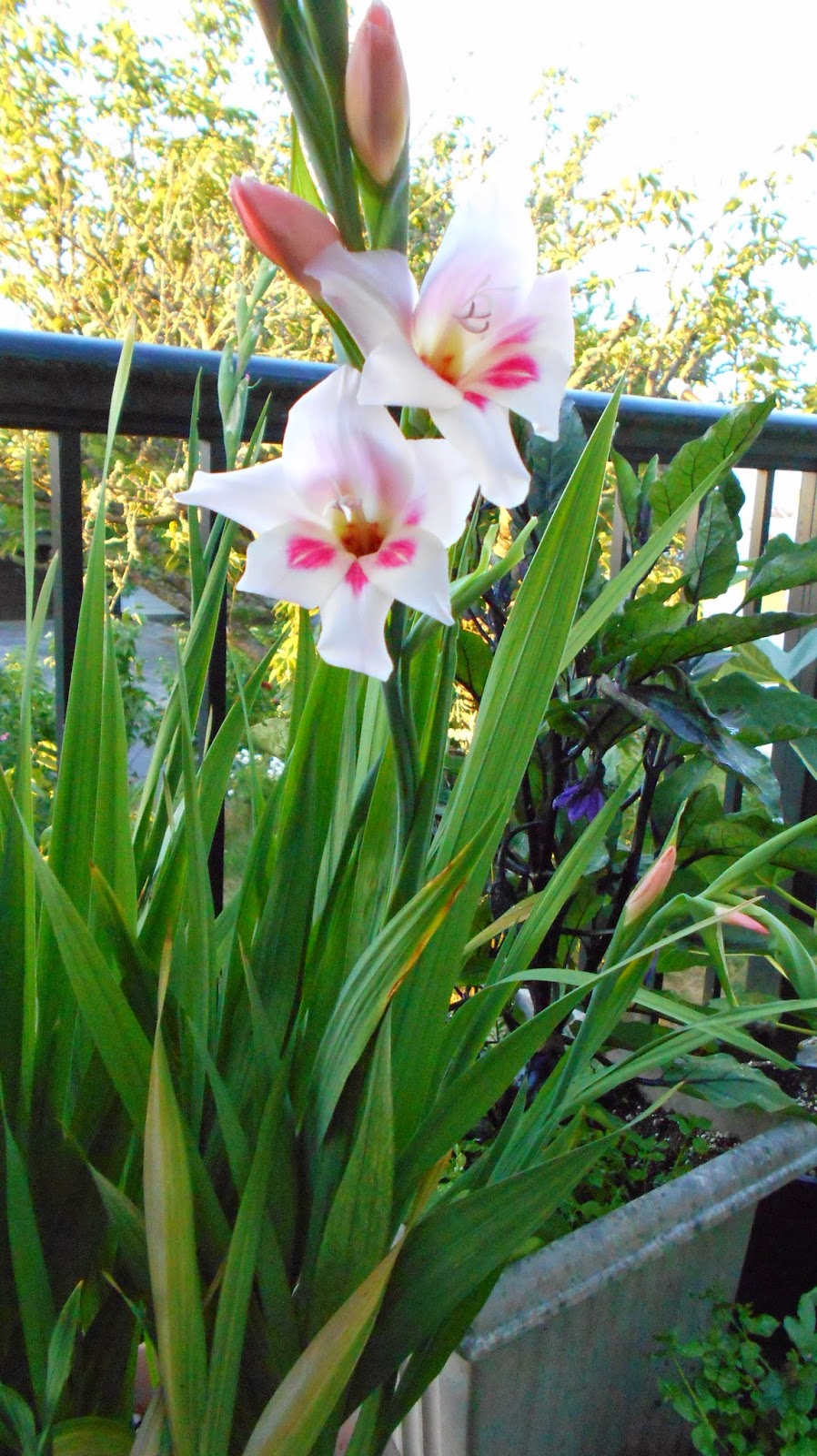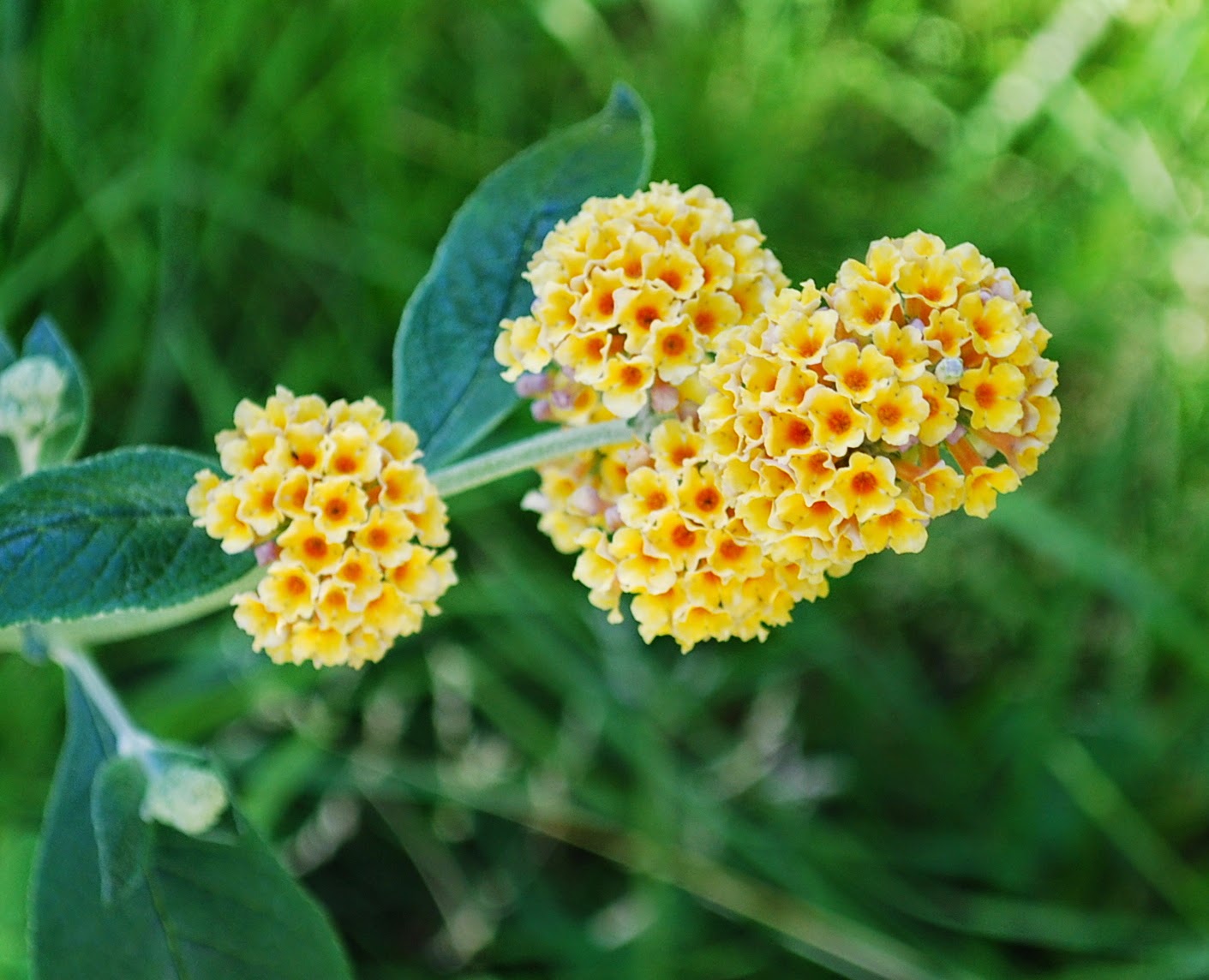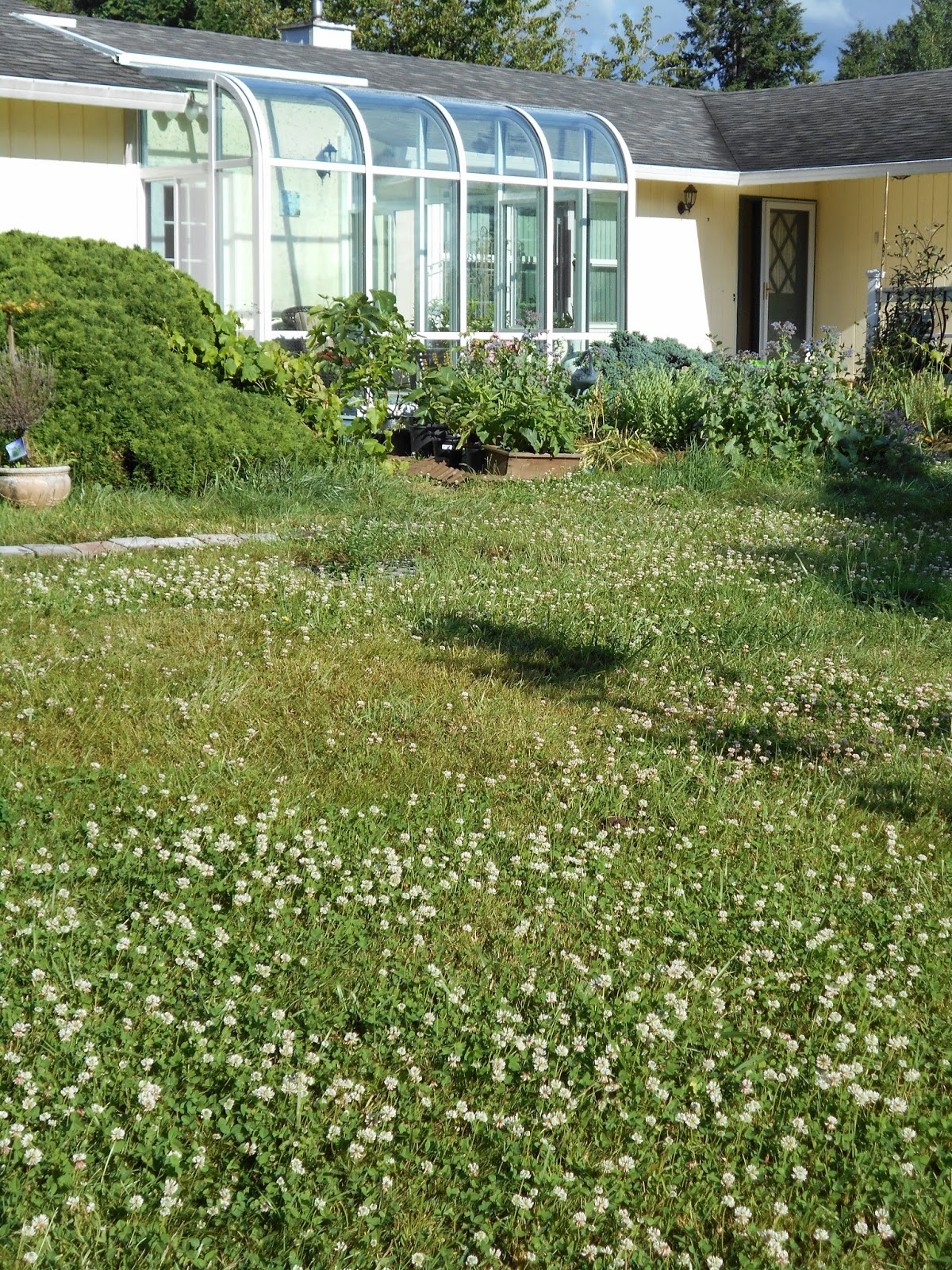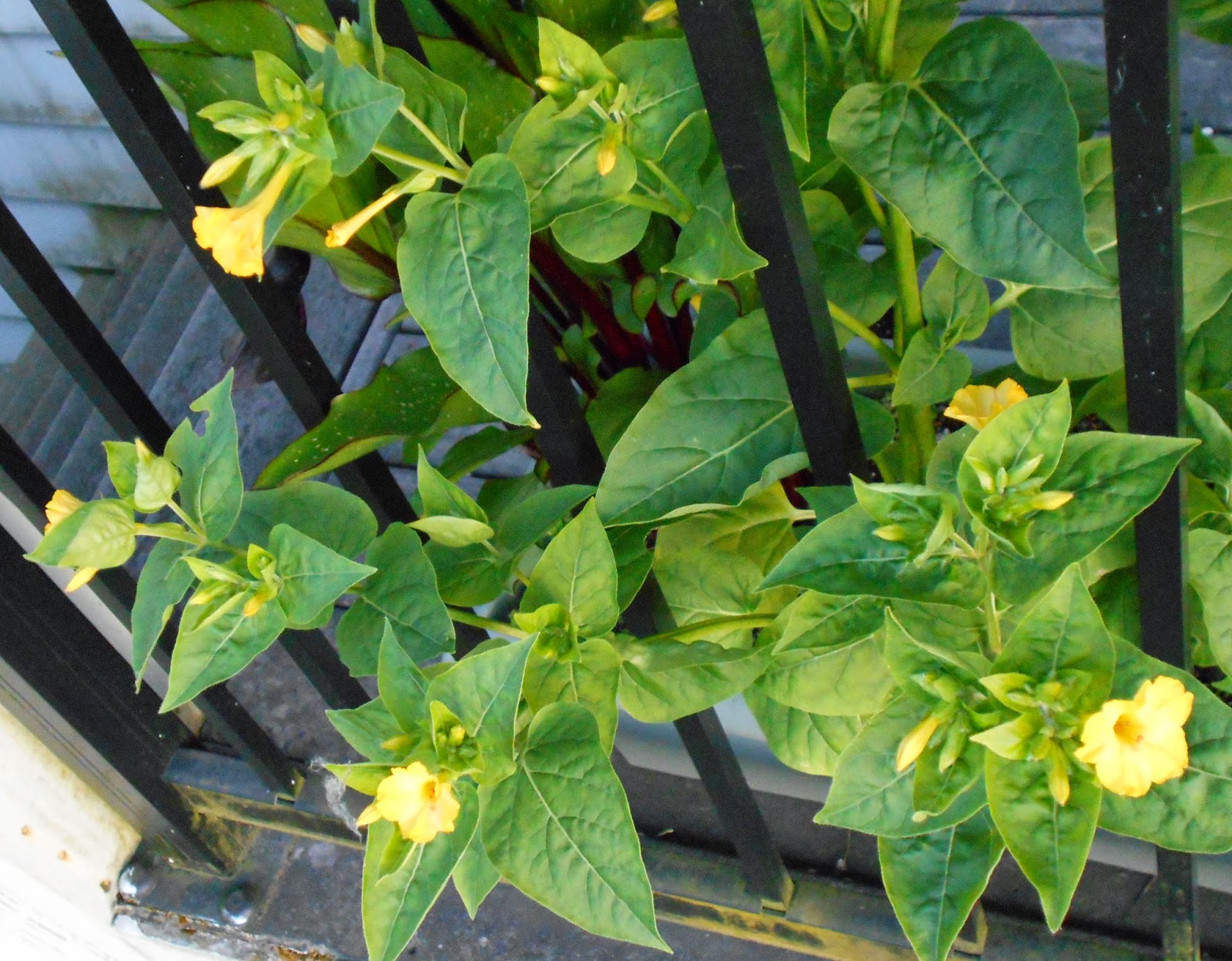 | ||
| Happiness is the only good. The place to be happy is here. The time to be happy is now. The way to be happy is to make others so. - Robert Greene Ingersoll |
Tuesday, July 08, 2014
The time to be happy is now. Robert Greene Ingersoll.
Seedlings. 7.7.14
 |
| Morning Glory Seedlings 7.7.14 |
 |
| Holllyhock "Happy Lights" seedlings 7.7.14 |
 |
| Hollyhock mixed double seedlings. 7.7.14 |
I started morning glory seeds because Ning wanted some fast vines, and I ran across the seed packets in Lowes. I don't know if they will actually bloom this year, but no harm trying.
The hollyhocks are planted now for next summer's flowers. There is a lot of conflicting info on the internet. The first - mixed double varieties - I also bought the seeds on impulse at Lowes. Then, researching the internet, most Alcea rosea - like those mixed doubles - have problems with leaf rust fungus di sease. I'm sure that will be an issue here. So I bought some seeds of a more rust resistant species, Alcea ficifolia "Happy lights". I think the single flowers will be nicer looking, too.
The A. ficifolia were started about 2 weeks after the A. rosea,but I think they will have plenty of time to catch up. The seeds can be planted summer to early fall.
I also planted columbine seeds. Not up yet. I have some carnation seeds, which I want to plant soon, if I get the energy. This is a good time of year to start some of next year's perennials from seeds.
Sunday, July 06, 2014
1st Tomatoes. Brugmansia. Gladiolas. 7.6.14
 |
| The First Sungolds. 7.6.14 |
 |
| Brugmansia. First Flowers after Dormant Overwintering. 7.6.14 |
We had the first tomatoes of the season. That's very good. Usually I don't get any until later. they were just cherry tomatoes, but worth the effort.
The Brugmansia had its first flowers. It is very fragrant. It overwinters easily, no effort. Same as geraniums. Just let it dry out in the fall, move it into the garage for the winter, bring it back out in Spring and start watering again.
The first of the heritage gladiolas bloomed. I didn't know what to do with them, so planted all into one container.
 |
| Heritage Gladiolas. 7.6.14 |
Labels:
brugmansia,
Gladiolus nanus,
overwinter,
Sungold,
Tomatoes
Saturday, July 05, 2014
New flowers in bloom. 7.5.14
 |
| Daylily I moved to the Battleground place, 2 months ago. 7.5.14 |
| Crocosmia in bloom. 7.5.14 |
 |
| Four O'clock "Marvel of Peru". 7.5.14 |
 |
| Buddleia X weyeriana "Honeycomb" |
 |
| Hummingbird on crocosmia "Lucifer". 7.5.14. Photo by Ning Wang. |
Labels:
"Honeycomb",
buddleia,
crocosmia,
day lily,
Four O'clocks,
Hummingbird,
Marvel of Peru,
X weyeriana
Friday, July 04, 2014
Potato and Garlic Harvest. 7.4.14
 |
| Potato Harvest. 7.4.14 |
 |
| Garlic bed, ready to harvest. 7.4.14 |
The garlic is brown as well. I dug out half of the garlic- this half was Inchelium Red. The husks may have suffered a bit from recent rains but look very good overall. Plump, firm cloves.
The raised bed method works well for both.
 |
| First Inchelium Red garlic. 7.4.14 |
Labels:
garlic,
heirloom garlic,
Inchelium Red,
potatoes,
Raised Beds
borage. chinese chives. Bee forage. Borage. 7.4.14Chine.4.14
 |
| Bumblebee on borage. 7.5.14 |
Bees are actively foraging borage and Chinese chives. The yard is bee paradise now. The borage is massive. I did fertilize with organic nitrogen earlier this year.
Next plan for Chinese chives is to have most in one raised bed, permanent. A few will be planted around in the flower beds as ornamentals.
 |
| Honeybee on borage. 7.5.14 |
 |
| Chinese Chives. 7.4.14 |
Labels:
bee forage,
Borage,
chinese chives,
honeybee forage
Bees forage the clover lawn. Hummingbirds in the Crocosmia. 7.4.14
 |
| Clover lawn. 7.2.14 |
| Humingbird on Crocosmia. Photo by Ning Wang. 7.4.14 |
| Hummingbird on Crocosmia. Photo by Ning Wang. 7.4.14 |
| Hummingbird. Photo by Ning Wang. 7.4.14 |
| Honeybee on Clover. Photo by Ning Wang. 7.4.14 |
| Honeybee on Clover. Photo by Ning Wang. 7.4.14 |
Labels:
bee forage,
clover,
crocosmia,
honeybee forage,
Hummingbird,
nitrogen cycle
Wednesday, July 02, 2014
Deck Flowers. 7.2.14
 |
| Overwintered Dianthus. 7.2.14 |
 |
| Four O'clock "Marbles". 7.2.14 |
 |
| Overwintered geraniums. 7.2.14 |
The geraniums overwinter very well. The red is about 3 or 4 years old. The smallest pink one was planted this summer. The others are 2 or 3 years old. Once they start blooming, they are impressive.
 |
| Four O'clock "Marvel of Peru". 7.2.14 |
Labels:
Dianthus,
Four O'clocks,
geranium,
Marbles,
Marvel of Peru,
overwinter
Sunday, June 29, 2014
Bee Forage. 6.29.14
 |
| Honeybee on Chinese Chives. 6.29.14 |
 |
| Honeybee on onion flower. 6.29.14 |
They especially like Chinese chives, onion flowers, and Phacelia. This is my first try at phacelia. Very pretty and easy.
The bees are actively foraging Ning's wildflowers as well.
 |
| Honeybee on Phacela. 6.29.14 |
| Wildflowers. 6.29.14 |
| Ning's wildflower meadow. 6.29.14 |
 |
| Honeybees on Chinese Chives. 6.29.14 |
 |
| Phacela. 6.29.14 |
Labels:
bee forage,
chinese chives,
honeybees,
Phacelia,
Wildflower
Buddleia Progress Report. 6.29.14
 |
| Buddleia "Blueberry Cobbler". 6.29.14 |
 |
| Buddleia "Miss Molly". 6.29.14 |
 |
| Buddleia "Miss Ruby". 6.29.14 |
As described in earlier posts, sterile buddleias are complex hybrids between Buddleia davidii and other species. They have the advantage of being sterle, so do not produce seeds. For that reason, the sterile hybrids are legal in this SPring Oregon and Washington. I did see some Buddleia davidii at Lowes, and walked past it a few times, beautiful dark purple. But as an environmentally oriented gardener, I couldn't bring myself to buy it. The B. davidii are highly invasive. The sterile hybrids do not set seed, so are not invasive. Despite being sterile, some varieties are highly vigorous, while others are much more restrained.
In their 2nd year, the varieties "Peach Cobbler" and "Blueberry Cobbler" are 7 feet tall, and equally wide. Also in their 2nd year, "Miss Ruby" is about 4 feet tall, and "Miss Molly" is about 3 feet tall. The most compact is "Blue Chip", which is about 18 inches tall.
Bloom order: "Miss Molly" was first, mid June. "Miss Ruby" was 2nd, late June. "Blueberry Cobbler" followed close behind, late June. "Peach Cobbler" is about to bloom, probably 1st week of July. "Blue Chip" does not have buds yet. Not a fair comparison, because I let that bed go wild while I was recuperating from surgery, and only this spring pulled out the competing weeds. It has made a resurgence of growth, but had a late start.
These buddleias are the fastest of all my shrubs to grow and establish. They are one of the few that deer and rabbits don't touch. They don't seem to be affected by any insects. Bumblebees forage the flowers. I'm not sure about honeybees - so far, there is minimal if any honeybee activity. The more compact varieties look ideal for smaller gardens, and the more vigorous varieties look ideal for privacy hedge.
Subscribe to:
Posts (Atom)